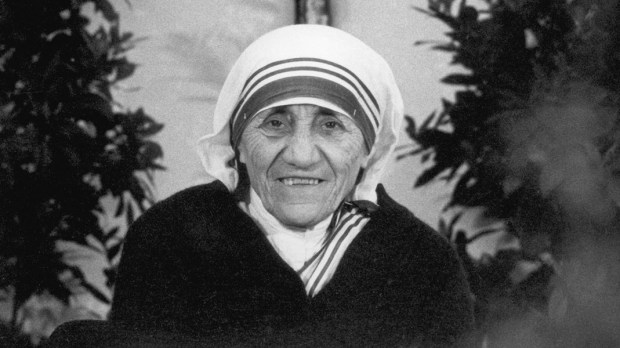Lenten Campaign 2025
This content is free of charge, as are all our articles.
Support us with a donation that is tax-deductible and enable us to continue to reach millions of readers.
Mother Teresa of Calcutta is one of the best-known saints today. Even before she was canonized in 2016, in life she was sometimes referred to as the “saint of the gutters,” because of her work among the poorest of the poor in the slums of Calcutta.
But relatively few people know the person who made Mother Teresa so well-known.
In 1971, British writer Malcolm Muggeridge published Something Beautiful for God, a book about Mother Teresa and the work of the Missionaries of Charity. Muggeridge had been an atheist earlier in life but eventually became Christian. He was so impressed by Mother Teresa’s witness that he became Catholic in 1982, at age 79.
Born in Croydon, a suburb of London, in 1903, Muggeridge was educated at Cambridge and began his career as a teacher in Egypt in the late 1920s. Shifting into journalism, he worked for newspapers around the world. Marrying Katherine Dobbs in 1927, he had an idealistic view of communism, and when the couple moved to Moscow in 1932, they felt that they would live out the rest of their life there.
But Muggeridge became disillusioned with communism. He and Gareth Jones, the Welsh journalist, were the only two to report on Stalin’s forced famine in Ukraine in 1932. Muggeridge’s reports, however, were heavily censored by the Manchester Guardian, his employer.
He would continue working for newspapers for the next decade, including some time in India, but during World War II, he served in British intelligence, posted to Africa and Paris.
Back in journalism after the war, he spent some time as Washington correspondent for the Daily Telegraph. Beginning in the 1950s he was a popular interviewer, panelist, and documentarian on British television. In 1957, he ruffled a lot of royal feathers when he published an essay in the Saturday Evening Post, “Does England Really Need a Queen?” In the 1960s, he became a sharp critic of liberalism and the new sexual laxity and use of drugs.
Muggeridge also wrote and appeared in several religion-oriented television documentaries, such as an American Public Broadcasting Service six-part series on the lives and teachings of “six characters in search of God” — St. Augustine, Blaise Pascal, William Blake, Soren Kierkegaard, Tolstoy and Dietrich Bonhoeffer.
Something Beautiful for God was based on a film Muggeridge had made for the BBC about Mother Teresa’s work in India. He related how during filming, one scene was taken in a “dark, cavernous building where the Sisters bring the dying from the streets outside.” The scene was “expected to be unusable because of the poor light,” he wrote.
“Actually, to the astonishment of all concerned, it came out bathed in an exquisite luminosity,” Muggeridge said. “Some of Mother Teresa’s light had got into it.”
Toward the end of his life, Muggeridge reflected on meeting Mother Teresa. In his 1988 book Confessions of a Twentieth-Century Pilgrim, he wrote
When I first set eyes on her, … I at once realized that I was in the presence of someone of unique quality. This was not due to … her shrewdness and quick understanding, though these are very marked; nor even to her manifest piety and true humility and ready laughter. There is a phrase in one of the psalms that always, for me, evokes her presence: “the beauty of holiness” — that special beauty, amounting to a kind of pervasive luminosity generated by a life dedicated wholly to loving God and His creation. This, I imagine, is what the halos in medieval paintings of saints were intended to convey.

